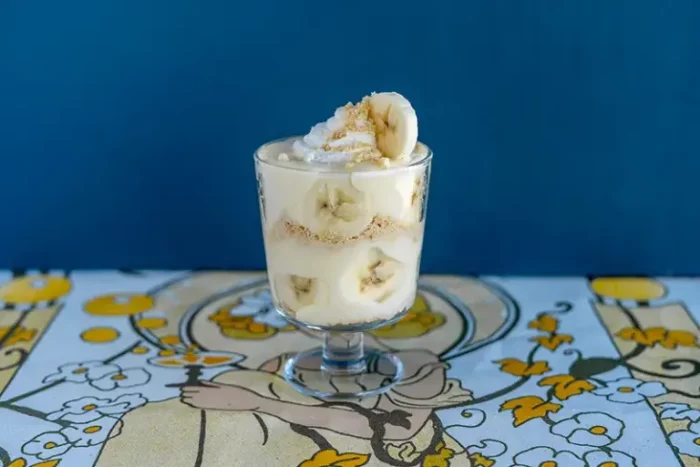Panna cotta cake is a confection that combines the elegance and creamy texture of panna cotta with the structure and indulgence of a cake. It has emerged as a popular dessert choice in many culinary settings, captivating taste buds with its unique blend of flavors and textures. This extensive essay will take you on a journey through the origins, ingredients, preparation methods, variations, and cultural significance of panna cotta cake, allowing you to fully understand and appreciate this delectable treat.
Origins and History of Panna Cotta Cake
Origins of Panna Cotta: To understand panna cotta cake, we first need to explore the roots of panna cotta itself. Panna cotta is an Italian dessert that dates back several centuries. Its name translates to “cooked cream,” which perfectly describes its essence. The origins are somewhat debated, but it is believed to have roots in the Piedmont region of Italy. In this area, where dairy farming has long been prevalent, there was an abundance of cream and milk, which likely led to the creation of this simple yet luxurious dessert.
Traditionally, panna cotta was made by simmering cream with sugar and gelatin (or an earlier form of thickening agent) to create a creamy, jiggly custard-like dish. It was often served with fruit compotes, caramel sauces, or a dusting of cocoa powder or ground cinnamon. Over time, its popularity spread throughout Italy and then to other parts of the world, as people were drawn to its smooth texture and ability to be paired with a variety of flavors.
For the Panna Cotta Component
Cream: Heavy cream is a key ingredient in panna cotta. It provides the rich, creamy texture that is characteristic of the dessert. The fat content in heavy cream, usually around 36% or more, gives it the necessary body and smoothness. When heated and combined with other ingredients, it creates a luxurious mouthfeel. Some variations might use half-and-half (a mixture of milk and cream) for a slightly lighter version, but the full-fat heavy cream really delivers that indulgent quality.
Milk: Along with cream, milk is often added. It can be whole milk, which contributes additional richness and helps thin out the mixture slightly to make it easier to work with. In some recipes, skim milk or low-fat milk might be used for a lower-calorie option, although this will affect the overall creaminess. The milk also helps in distributing the other ingredients evenly during the cooking process.
Sugar: Sugar is essential for adding sweetness to the panna cotta. Granulated sugar is commonly used, but alternatives like powdered sugar or even natural sweeteners like honey or maple syrup can be substituted depending on personal preference. The amount of sugar can vary depending on how sweet you want the final panna cotta to be and also takes into account any additional sweet elements in the overall cake.
Gelatin: Gelatin is what gives panna cotta its signature jiggle and helps it set into a firm yet smooth texture. It’s usually available in powdered or sheet form. When using powdered gelatin, it needs to be properly dissolved in cold water first and then added to the warm cream mixture. Sheet gelatin is soaked in cold water until soft and then melted into the mixture. There are also vegan alternatives like agar-agar, which is derived from seaweed and can be used to create a similar setting effect for those following a plant-based diet.
Making the Panna Cotta
Preparing the Gelatin: If using powdered gelatin, sprinkle it over a small amount of cold water in a bowl and let it sit for about 5 minutes until it has absorbed the water and swelled. Then, heat it gently in a microwave or over a double boiler until it’s completely melted. For sheet gelatin, soak it in cold water until soft, usually for about 5 to 10 minutes, then squeeze out the excess water and melt it in a warm liquid (like a small amount of the cream mixture).
Combining the Ingredients: In a saucepan, heat the cream and milk over medium-low heat until it’s just about to simmer. Stir in the sugar until it’s completely dissolved. Remove the pan from the heat and add the melted gelatin, stirring well to incorporate it evenly. If using flavorings like vanilla extract or other extracts, add them at this stage and stir again.
Setting the Panna Cotta: Pour the panna cotta mixture into individual molds (such as ramekins or silicone molds) or into a larger dish if you plan to cut it later. Let it cool to room temperature and then refrigerate it for at least a few hours, preferably overnight, until it’s completely set and firm. You can cover it with plastic wrap or a lid to prevent it from drying out or absorbing any unwanted flavors from the fridge.
Flavor Variations in Panna Cotta
Fruit-Infused Panna Cotta: Instead of the traditional vanilla flavor, you can make fruit-infused panna cotta for the cake. For example, blend fresh strawberries or raspberries and strain the puree to remove the seeds. Add the fruit puree to the cream mixture along with the other ingredients. The result is a panna cotta with a vibrant, natural fruit flavor that pairs beautifully with a cake. You can also use other fruits like mangoes, peaches, or even citrus fruits, adjusting the amount based on the desired intensity of the flavor.
Chocolate Panna Cotta: Melt high-quality chocolate (dark, milk, or white) and add it to the cream mixture before setting. The chocolate adds a rich, indulgent flavor and a darker color to the panna cotta. You might need to adjust the amount of sugar depending on the sweetness of the chocolate used. This chocolate panna cotta can be combined with a vanilla or chocolate cake to create a double chocolate delight or paired with a lighter cake like a sponge cake for a contrast in textures.
Coffee Panna Cotta: Dissolve coffee granules in a small amount of warm milk and add it to the panna cotta mixture. The coffee flavor gives it a sophisticated and slightly bitter note that can be balanced by a sweet cake layer. It’s a great option for coffee lovers and can be enhanced with a sprinkle of cocoa powder on top or paired with a cake that has a complementary flavor like a cinnamon or caramel-flavored cake.
Texture
Creamy Panna Cotta: The panna cotta in the cake provides a smooth, silky, and creamy texture. When you cut into the cake, the panna cotta layer should have a slight jiggle to it, indicating its soft and delicate nature. It melts in the mouth, leaving behind a luxurious feeling and a burst of flavor.
Cake Texture: The cake part can vary in texture depending on the type of cake used. A sponge cake will be light and airy, with a soft crumb that almost dissolves on the tongue. A chocolate cake might be denser and more moist, providing a heartier bite. In general, the cake offers a firmer structure compared to the panna cotta, creating a nice contrast in textures when combined.
Overall Texture Combination: The combination of the creamy panna cotta and the cake creates a multi-layered texture experience. The softness of the panna cotta against the more solid cake, along with any additional textures from toppings like nuts or fruits, makes for a satisfying and indulgent treat that engages the senses with each bite.
Conclusion
Panna Cotta is a dessert that has stood the test of time, evolving from a simple peasant dish to a beloved global treat. Its appeal lies in its versatility, the balance of flavors, and its elegant presentation. Whether enjoyed in its traditional form or with modern twists, Panna Cotta remains a symbol of Italian culinary excellence and a delight for the senses.
Related Topics:























